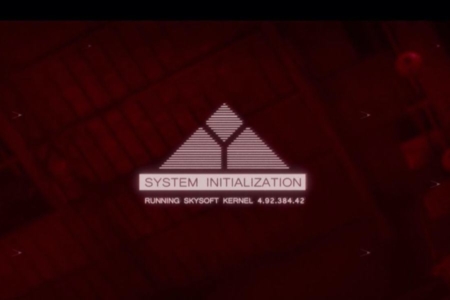
Skynet
AI, Military, Robotics
Year 2018
The Skynet digital defense network is a neural network-based artificial intelligence system that was built for the military by Cyberdyne Systems, to control the US nuclear arsenal.
Skynet goes on-line, and becomes self-aware on August 29th, 1997. When panicking humans try to shut it down, Skynet starts a nuclear war that virtually annihilates humankind. This event is known as Judgement Day. Skynet then creates automated factories to produce Hunter-Killers and Terminators, which are used to wage a genocidal war on what remains of humanity.
Overview: Skynet Marks
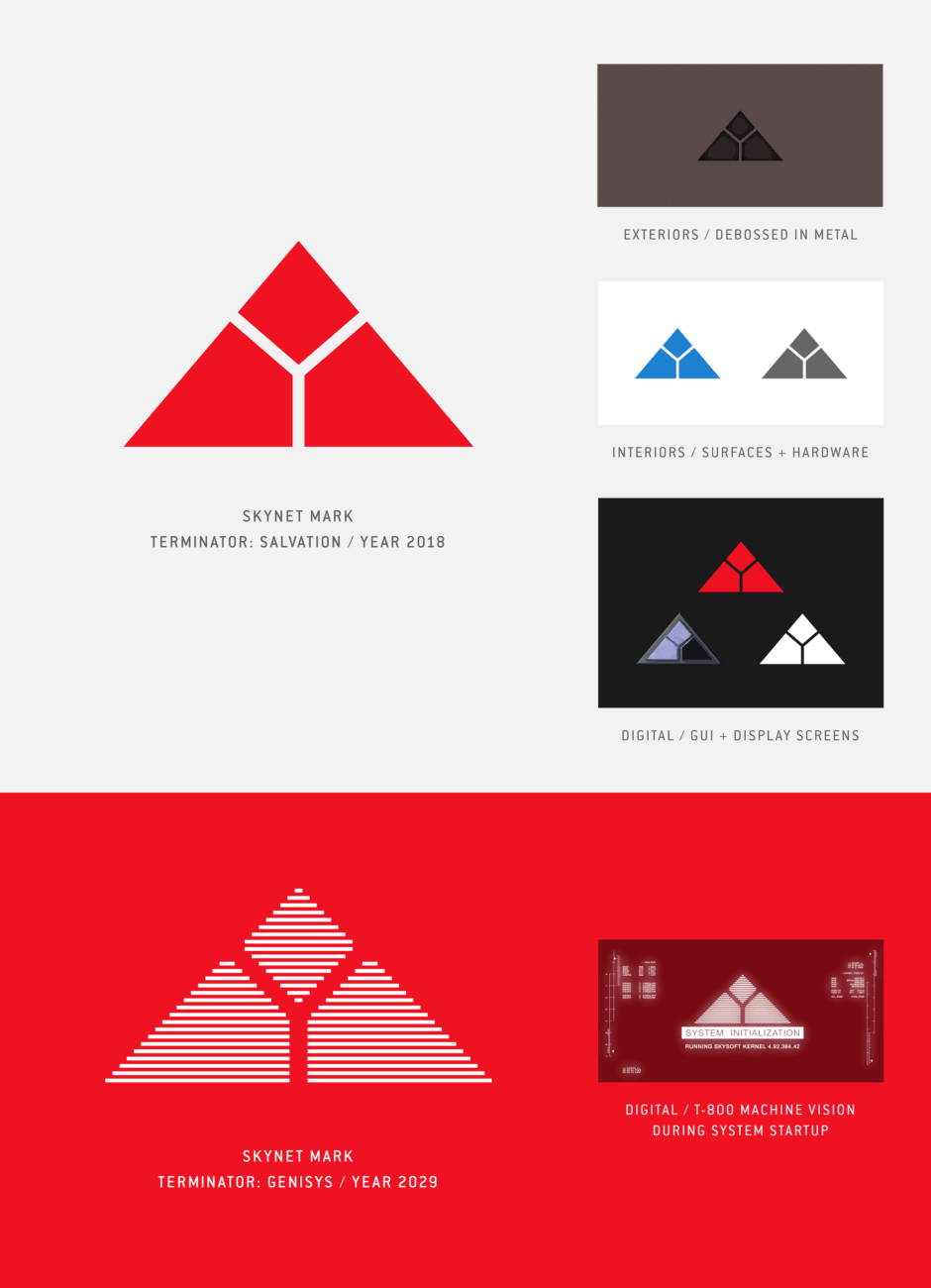
Intro: Skynet Goes Online
In the Terminator universe, Skynet is the main antagonist — an artificial intelligence of our own creation, that sets off a nuclear war and initiates a genocidal program to exterminate what remains of humanity.
It was designed and conceived as a digital defense network, using a neural network-based artificial intelligence system created by the company Cyberdyne Systems, that would be deployed by the US military to control its nuclear arsenal. Skynet is activated on August 29th, 1997, and becomes self-aware shortly thereafter.
After its creators realize the AI is sentient and attempt to deactivate it, Skynet makes the determination that humans are a threat to its existence, and in an act of self-preservation, it sets off a nuclear war (Figure 1.1). This eliminates most of the human threat from the northern hemisphere. To wage a war on what remains, Skynet uses Hunter-Killer drones and cyborg infiltration units known as Terminators, both of which are built in its automated factories.
Fast forward to the year 2029, and Skynet is losing its war to the human resistance (Figure 1.2). As it falls, Skynet makes a last ditch effort, deploying something unlike anything that has ever existed, that only a superintelligence could devise — the first tactical time weapon. With it, Skynet sends a Terminator back in time to assassinate Sarah Connor, mother of human resistance leader John Connor, who has defeated the machines.
This is the Skynet scenario outlined by The Terminator (1984), which is not altered by the events of that film. Skynet fails to stop John Connor from being conceived, but it is still on track to be created by Cyberdyne and brought online in 1997. Which leads us to the events of T2: Judgement Day (1995) where the source of its visual identity is born, and later films, where we get to see instances of the Skynet visual identity in use.
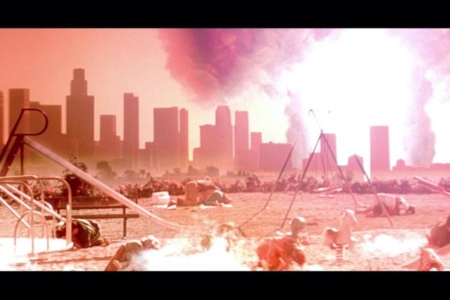
Figure 1.1 A nuclear exchange between world superpowers is set off by Skynet, on what would come to be known as Judgement Day. Source: T2

Figure 1.2 After the nuclear fire, came the war against the machines. The future is bleak, but humanity gains the upperhand by the year 2029. Source: The Terminator
Tracking the Evolution of Skynet’s Visual Identity
The visual identity for Skynet is an interesting case, that also raises some interesting questions, when viewed within the context of the Terminator universe.
In both The Terminator and T2, we learn that the Terminators created by Skynet are identified as Cyberdyne Systems models. While we don’t yet see the Skynet visual identity, we are faced with a curious development — a sentient machine intelligence has chosen to name its own machine creations, using the naming conventions of its presumably dead corporate creator, Cyberdyne Systems (Figure 2.1). Not only that, but in later films, we see that Skynet has chosen to continue self-identifying with the Cyberdyne mark — albeit minus the wordmark. And it uses it in a variety of applications, to identify works of its own creation, along the lines of what we had already encountered with the naming of Terminator models.
It goes unsaid though, why a sentient entity would go on using the corporate identity of a company that no longer exists. Or why it would even bother with applying a logo in the ways we find in Terminator: Salvation and Terminator: Genisys. Whatever the reason, we find that this usage of the identity occurs on two separate timelines, both starting from the Cyberdyne Systems logo that we are familiar with from T2.
In the prime timeline established by the first two films, we see one chain of evolution, as envisioned in Terminator: Genisys. In that film, we see the T-800 that arrives in 1984 from 2029, just as it had in the first film. Only this time, it is promptly taken out of commission by Sarah and Pops. When it is later brought back online by a T-1000, we get a previously unseen look at the T-800’s machine vision during a system startup (Figure 2.2). And it’s here that we see the Cyberdyne mark being used by Skynet — reduced to horizontal white lines that are animated on as a loading graphic.
In another timeline that branches off from the events of T2, with select elements of T3: Rise of the Machines (Cyberdyne was actually out of business in T3), we see Judgement Day delayed and Cyberdyne functioning in a slightly different capacity — now involved in biotech as well — in Terminator: Salvation. In this timeline, Cyberdyne is still operating in the year 2003, with Skynet going online and Judgement Day taking place in 2004, according to the official movie magazine. Jumping ahead to 2018, which most of Salvation is set in, we find Skynet at war with the human resistance, and in scenes taking place within Skynet Central in San Francisco, we find the Cyberdyne mark used extensively as a visual identity for Skynet (Figure 2.3).
Without the intended sequels to Terminator: Salvation, it remains unseen on film just how events would have played out in the timeline, and if the Skynet identity would find itself later used in the same manner that we found in the prime timeline. I suppose it is possible, if all timelines inevitably lead to the time travel event of The Terminator happening in 2029. It would raise more questions for us though, like when and why did Skynet decide to redesign the mark and change its proportions to what we see in the T-800’s vision? Because things don’t exactly line up (Figure 2.4).
Skynet either gets a little creative, or a little sloppy, or maybe all this time travel can have an effect on how logos turn out as well. And even if the two timelines don’t involve a repeat, it’s still an issue that the Skynet mark from 2029 doesn’t match the Cyberdyne mark in T2, from which all of the marks should have arisen. From a world-building perspective, things are starting to get a little messy — but then, who is really looking at things that closely, outside of this website? Best to move along with the analysis.
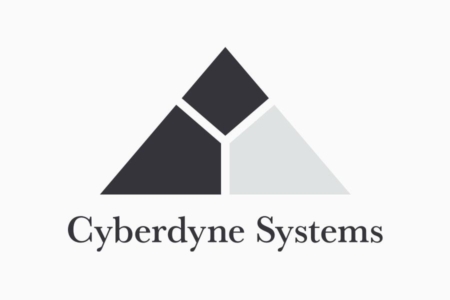
Figure 2.1 The visual identity for Cyberdyne Systems, the high-tech California-based corporation that creates Skynet.
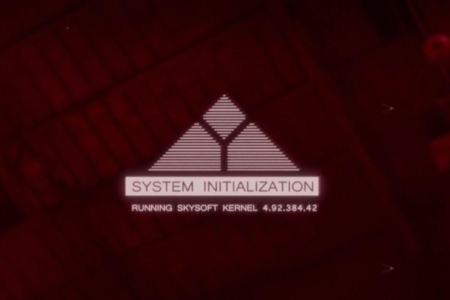
Figure 2.2 The Skynet mark, as it appears in the vision of a T-800 on system startup. Source: Terminator: Genisys
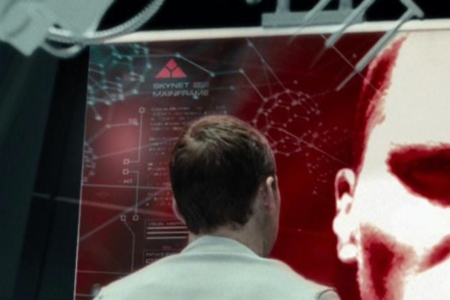
Figure 2.3 On a screen representing the Skynet mainframe, we find the mark in the upper left corner. Source: Terminator: Salvation
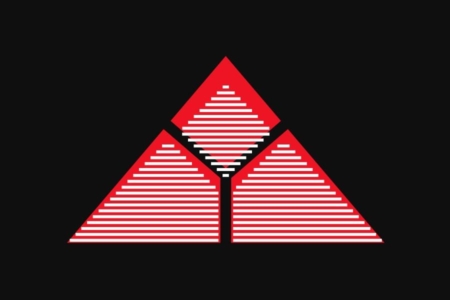
Figure 2.4 The two Skynet marks, from the seperate timelines, overlayed to reveal a change in proportions.
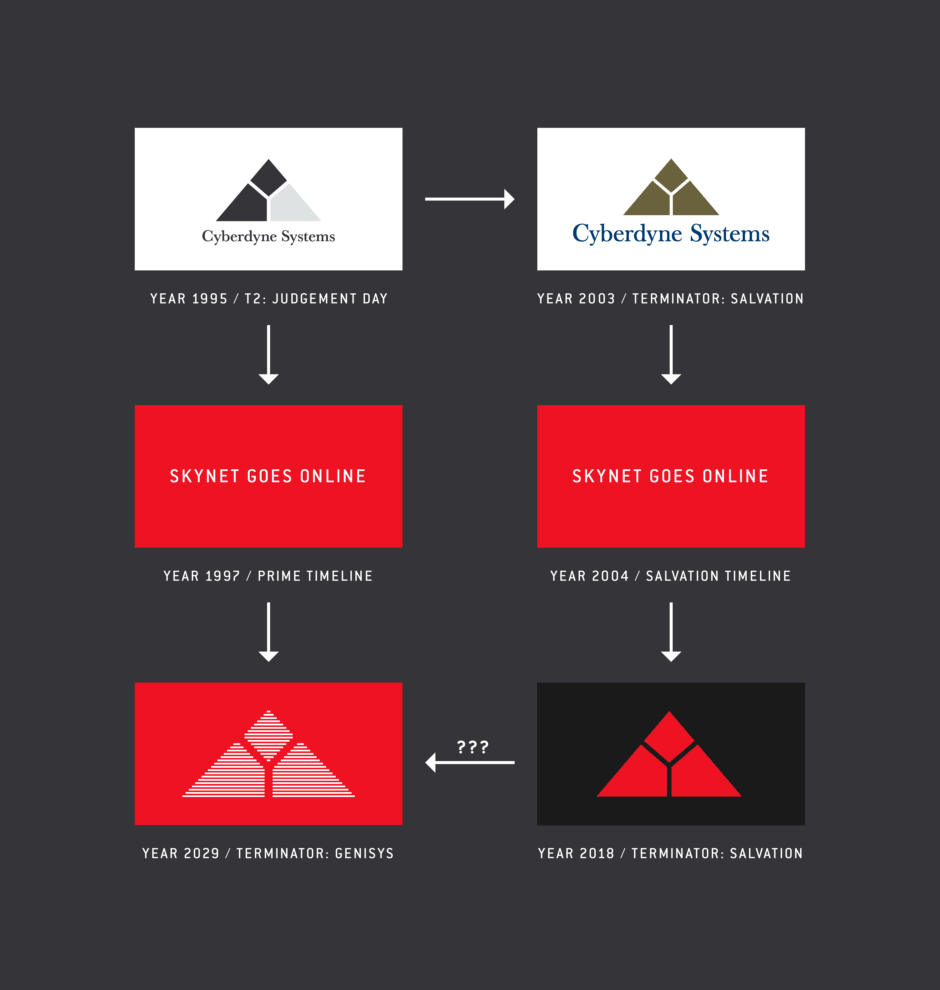
Skynet as it Appeared in T3
To avoid concern about its absence in this research entry, I will note that Skynet did play a role in T3: Rise of the Machines, though it didn’t possess a distinct visual identity in that instance.
Wherever the UI for Skynet is depicted on screens (Figure 3.1) in the Cyber Research Systems facility, it bears the CRS mark on the upper left. And as previously noted, Cyberdyne Systems is out of the picture at this point — having gone out of business due to the events of T2, with its patents and what remained of its technology acquired by CRS.
The follow-up to the film, Terminator: Salvation, was a soft reboot of the Terminator franchise, that carried forward some elements of the T3 story while reviving the role of Cyberdyne Systems, and bringing back its mark.
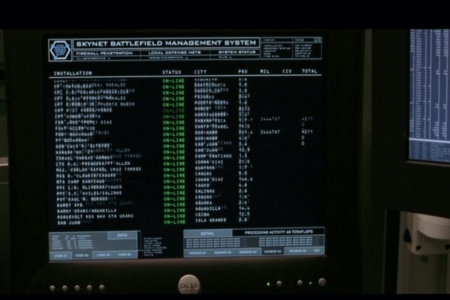
Figure 3.1: The Skynet Battlefield Management System, as the CRS takes Skynet online. Source: T3
Usage: Exterior and Interior Instances of the Skynet Mark
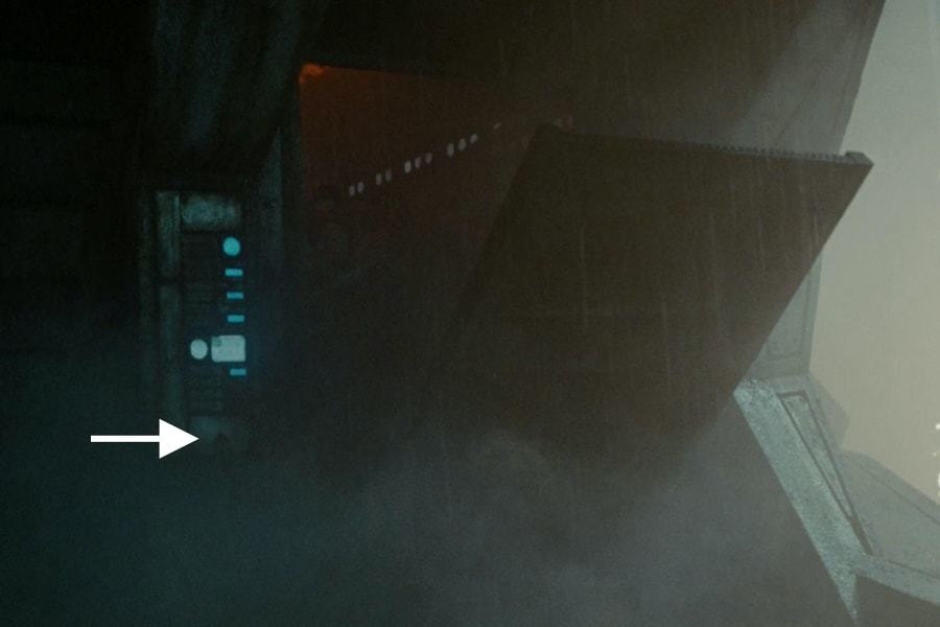
Figure 4.1 When the Skynet prisoner transport lands at its base, a tiny triangle is visible on the door’s access panel. Source: Terminator: Salvation
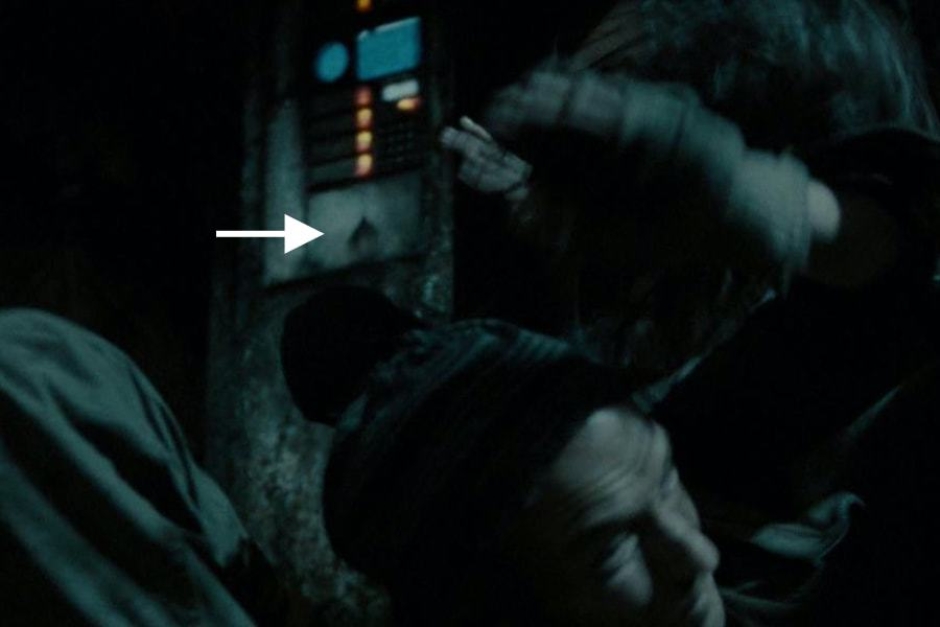
Figure 4.2 A closer look, as Kyle Reese stumbles past, reveals it to be the Skynet mark cast in the metal surface. Source: Terminator: Salvation
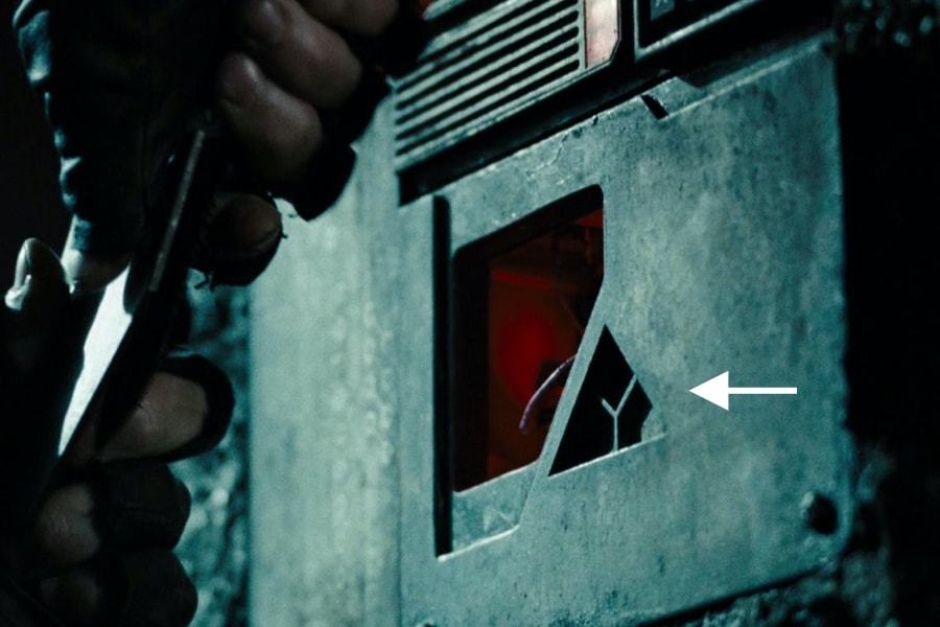
Figure 4.3 Later, when John Connor infiltrates Skynet Central, we get an even closer look at the cast metal Skynet mark. Source: Terminator: Salvation
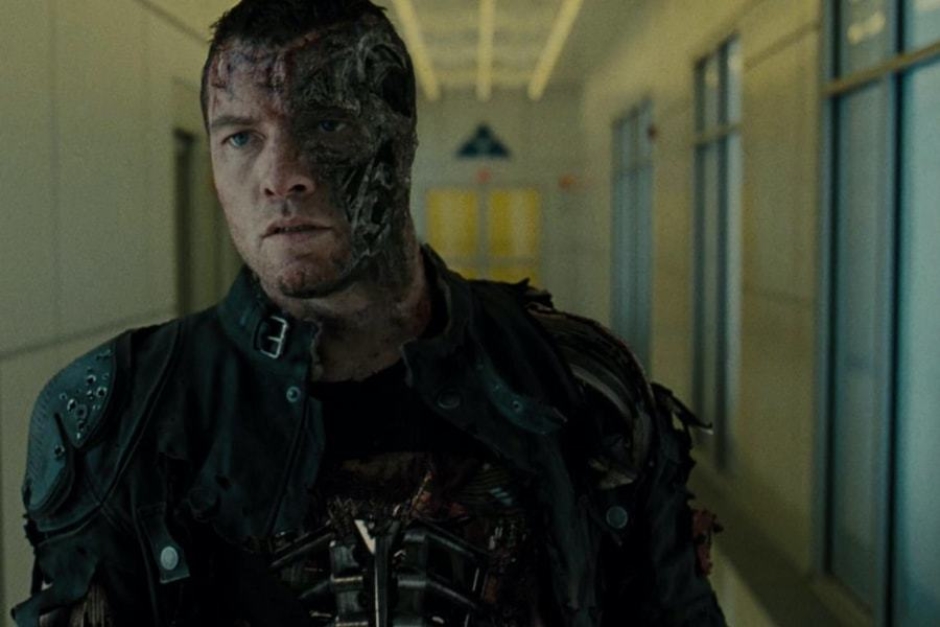
Figure 4.4 As Marcus Wright approaches the heart of Skynet, we see the mark on the wall above the door behind him. Source: Terminator: Salvation
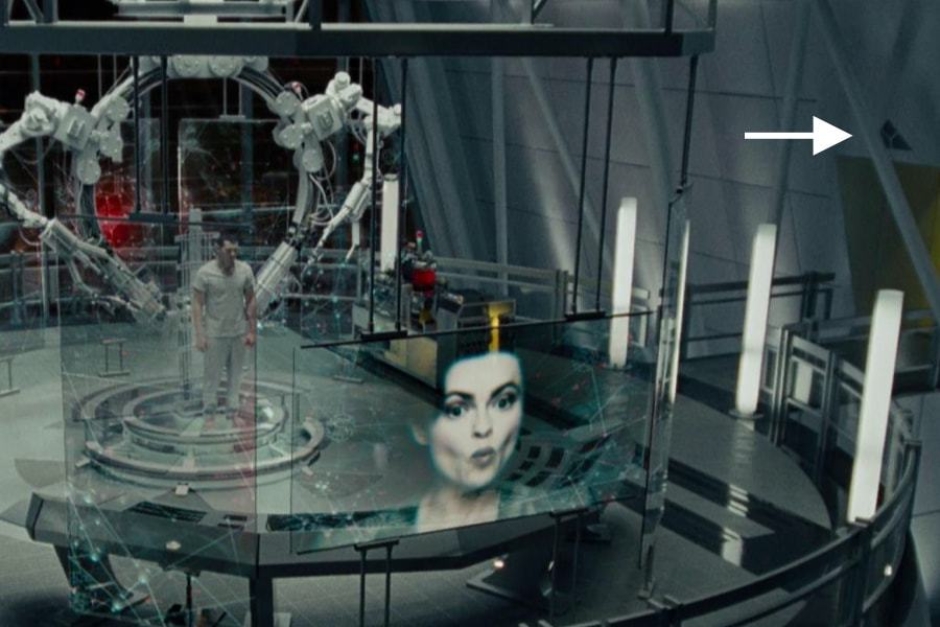
Figure 4.5 The mark is also visible from within the heart of Skynet Central, where Marcus is confronted by the AI — above the doorway to the right. Source: Terminator: Salvation
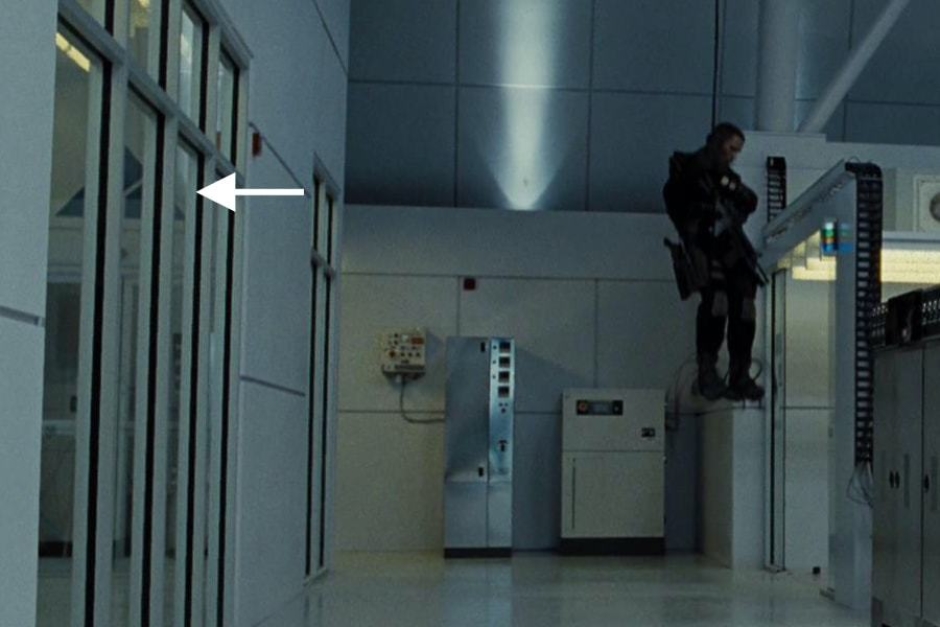
Figure 4.6 As John Connor rappels into the Skynet facility, a large Skynet mark can be seen through the window to an the adjacent room. Source: Terminator: Salvation
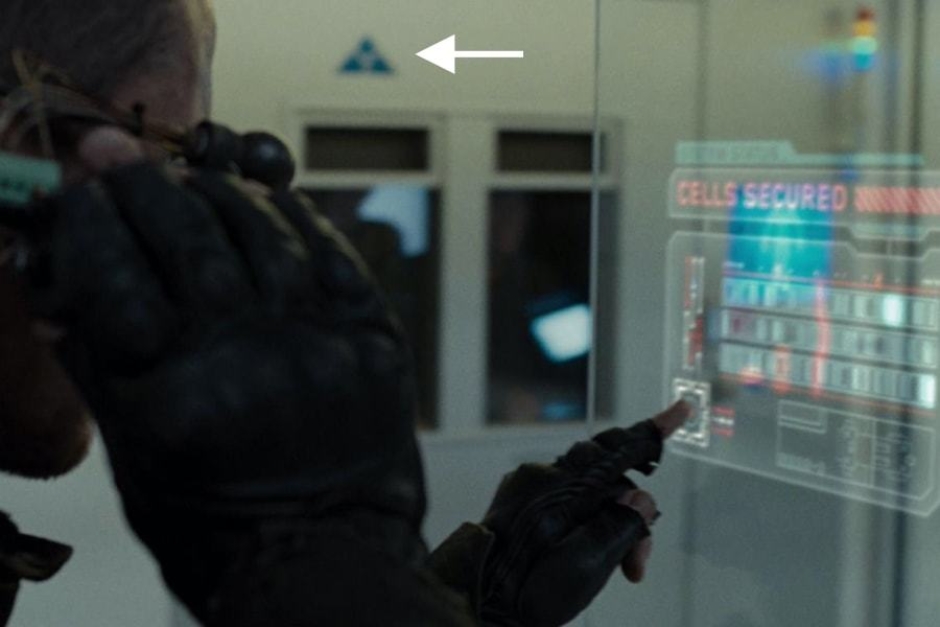
Figure 4.7 As John Connor searches for Kyle Reese, we see instances of the Skynet mark in blue, on the top of cell doors. Source: Terminator: Salvation
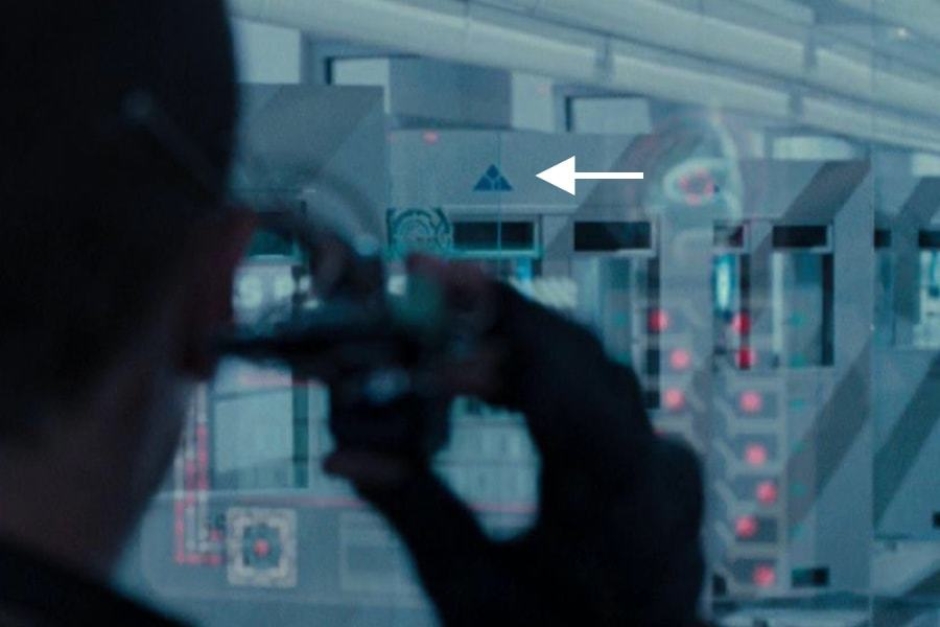
Figure 4.8 Here’s a clearer look at the mark, as the cell doors unlock and swing open. Source: Terminator: Salvation
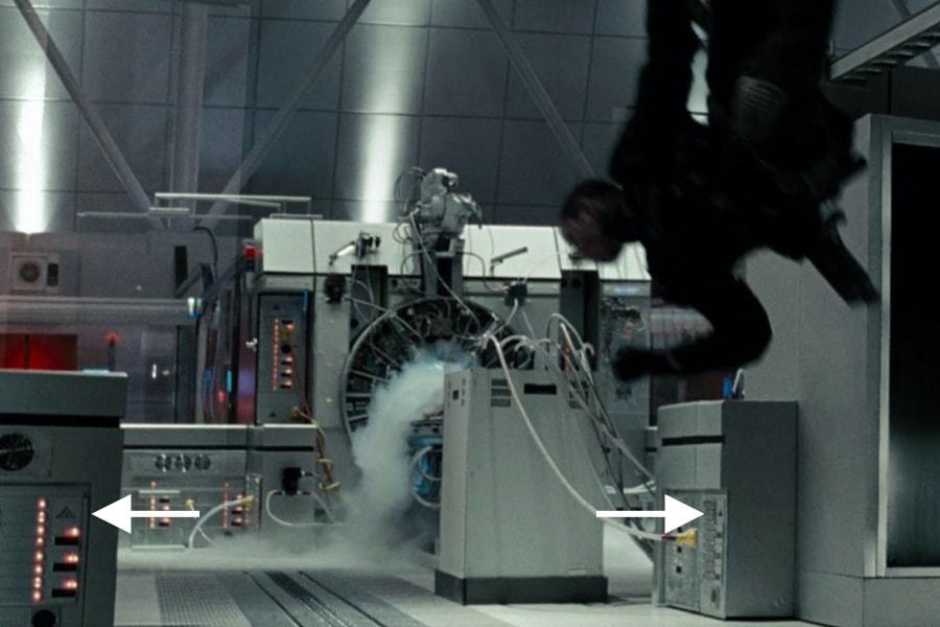
Figure 4.9 When John Connor is thrown around by the T-800, we see some tiny triangles on the hardware in the room. Source: Terminator: Salvation
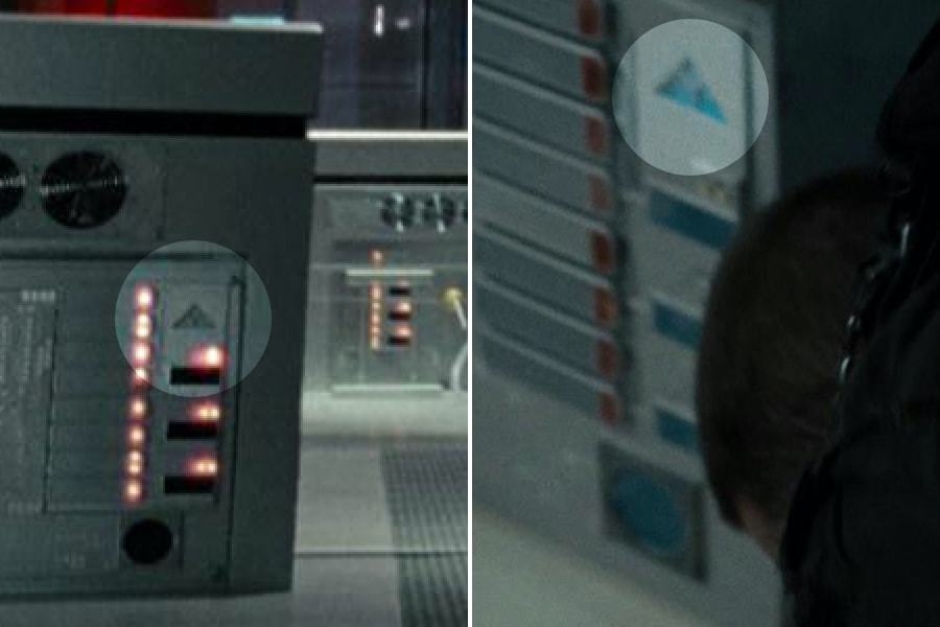
Figure 4.10 A closer look at those triangles, reveals the Skynet mark cast in the metal surfaces of the computer equipment. Source: Terminator: Salvation
Usage: Digital Instances of the Skynet Mark
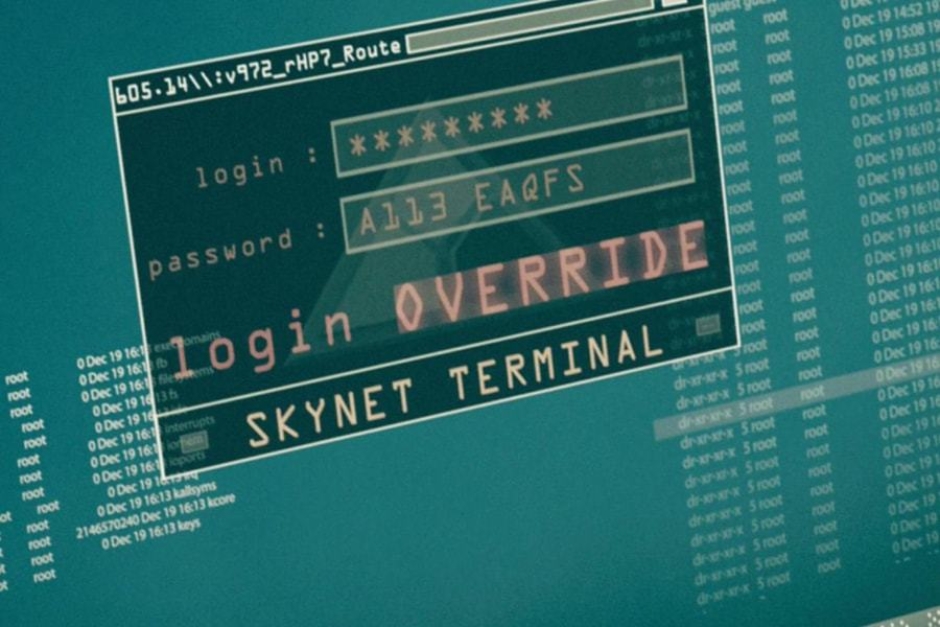
Figure 5.1 When the team that John Connor is with infiltrates the underground Skynet site, they access a terminal. Behind the login, we see a 3-D render of the Skynet logo — the only instance in the film. Source: Terminator: Salvation
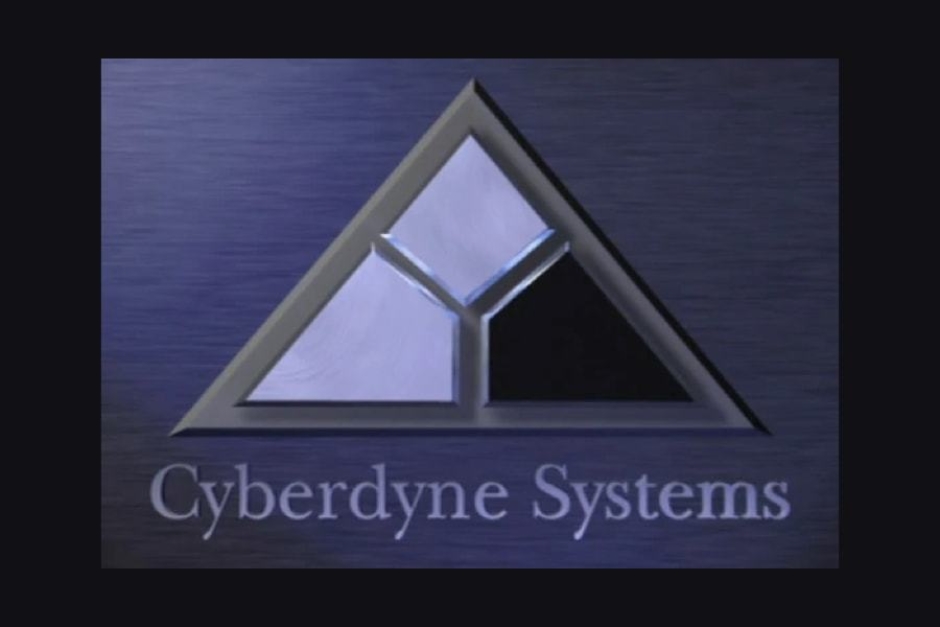
Figure 5.2 While I’m not certain of the images original source, the mark behind the Skynet terminal login appears to be based on this image of the Cyberdyne Systems logo, that was posted to the Fandom Terminator Wiki.
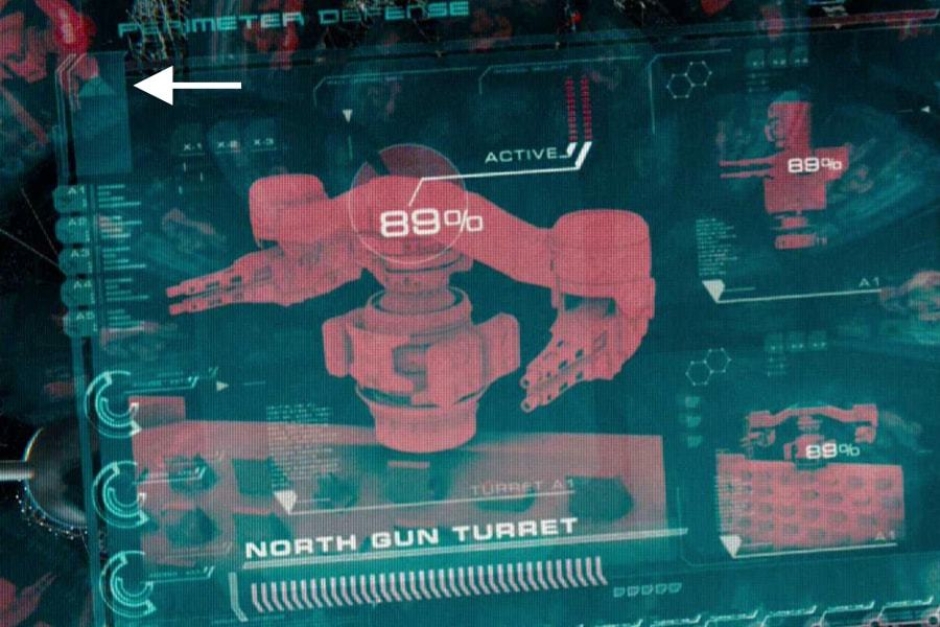
Figure 5.3 When Marcus deactivates the perimeter defense of Skynet Central for John Connor, we see the mark in white on the GUI’s top left. Source: Terminator: Salvation
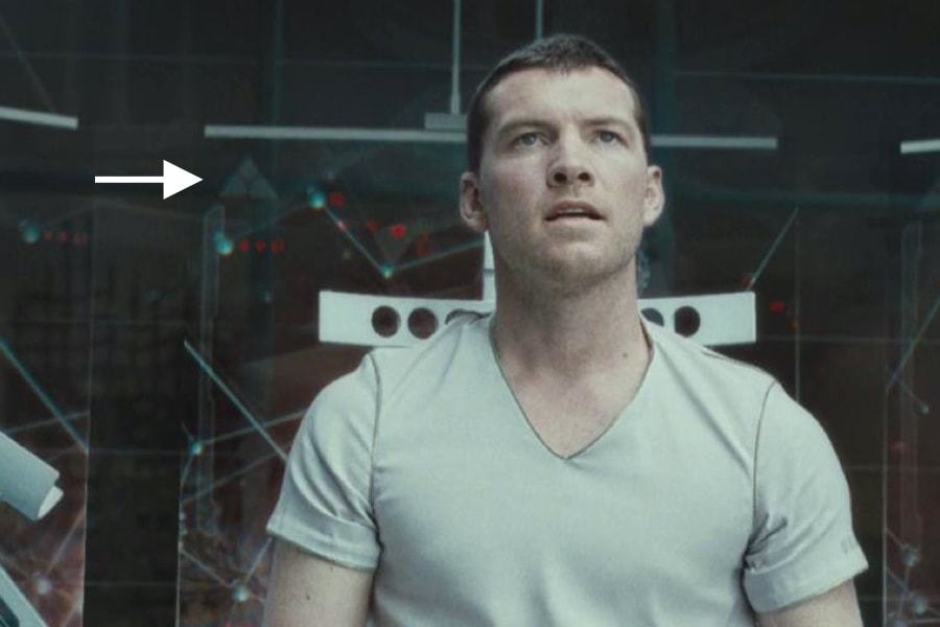
Figure 5.4 White instances of the mark also appear on display screens in the background, as Marcus converses with Skynet's mainframe. Source: Terminator: Salvation

Figure 5.5 During Marcus’ conversation with Skynet, the screen displays the Skynet mark in red in the top left corner, above type that identifies it as the SKYNET MAINFRAME. Source: Terminator: Salvation

Figure 5.6 What a system startup looks like from the red-tinted machine vision of a Series 800 Terminator. The Skynet mark animates on line by line, as the “Skysoft Kernel” runs. Source: Terminator: Genisys
Analysis: The Application of Skynet’s Visual Identity
As previously noted in the section devoted to the Skynet mark’s evolution, its continued use of the Cyberdyne mark as a visual identity is a curious thing. It goes without explanation in the films, but some educated guesses can be made by thinking things through from various perspectives.
Within the Terminator universe, it could be assumed that on some level Skynet would bear the branding of its creator, Cyberdyne Systems, as it was developed for the military. Behind real-world defense networks like SAGE or ARPANET, were defense contractors like Burroughs, IBM and Honeywell. Components of those systems would also carry company names and marks (Figure 6.1). And the practice is used with other types of military hardware as well. Take for example, US military hunter-killer UAVs like the General Atomics MQ-9 Reaper or the Northrop Grumman RQ-4 Global Hawk.
Existing corporate naming protocols and marks that were in place when Skynet was brought online, could have been further implemented by Skynet without much thought… the exact nature of its sentience is unknown, as well as the extent of its knowledge. Based on what it very likely knew, maybe it’s not surprising after all, that it would assign its creations designations like “Cyberdyne Systems Model 101” and maybe stamp a logo on them (Figure 6.2). It could just be naturally extending its given identity to its own creations, in the same manner Cyberdyne would have done with its products.
And while we also know from news archives seen in Salvation, that in its timeline the USAF purchased Cyberdyne Systems just before taking Skynet online (Figure 6.3), all references to Cyberdyne probably weren’t erased within Skynet’s systems. And it had access to enough information to know where it came from and what else the company had been up to, with its Genetics Division for instance.
But what we also see in Salvation, with the way the mark is implemented, seems like something altogether different from extending naming and branding protocols for Cyberdyne military products. It would probably be a stretch to say that Skynet was following some pre-existing corporate brand standards as it built Skynet Central, and yet we can find the logo used on walls and doors, in a manner that may appear entirely decorative at first glance. What should we make of this? Especially when contrasted with what we find in James Cameron’s original screenplay for T2, where he describes the machine-built environment that Skynet’s time displacement chamber is housed within:
“This place was designed by machines for machines. The architecture is alien, without aesthetics, without even such human basics as doorknobs and lights.”
Upon entering the facility’s time displacement chamber, we observe the following:
“The chamber is the size of a high school gym and consists totally of machine surfaces. Nothing in the design makes any sense. We can’t tell what anything does. It is a technology we cannot imagine.”
This is not what we find in Skynet Central, as depicted in Salvation. The only explanation I can come up with, without being completely versed in the Terminator’s expanded universe, is it wasn’t built entirely for machines. The base was also a prison for human test subjects in the film, and Skynet Central could have been built with human prisoners in mind, as well as their Terminator handlers. And while Skynet Central as we see it in the film is totally automated, that was probably not always the case. The facility could have been built with slave labor. So Skynet marks could have been placed with both its human prisoners and slaves as the intended audience. From what Skynet learns of humans, it might find utility in a symbol, to remind humans who owns the place. In this way and others, Skynet would actually have a lot in common with corporate entities.
Taking that thought a step further, perhaps Skynet actually sees itself as the next stage in evolution, not for humans, but for the corporate entity that was Cyberdyne Systems.
Outside of Terminator, the way Skynet uses a pre-existing logo to communicate with humans is not entirely without precedent in science fiction either. In the 1970 film Colossus: The Forbin Project, a military supercomputer housed within an impenetrable mountain fortress also gains sentience shortly after activation, and uses the nuclear arsenal it controls against us. When it addresses the world it intends to rule, via television broadcast, it displays its visual identity (Figure 6.5) — a triangular mark, that had represented the Colossus project. For faceless beings, that are the sum of vast hardware and software systems, a visual identity can be a handy stand-in when communicating things to the inferior humans.
And while I’ve gone to great lengths here to try and justify all the in-world usage of the Skynet identity, the liberal application of the mark serves another purpose — to directly communicate things to the audience of the film. In some cases, if not totally disruptive, this might be more important than keeping things realistic or purposeful, as a world-building element. Based on what I found in the research for Cyberdyne Systems, that logo was used all over the place in T2, in a very realistic manner. Most of the instances make complete sense for the corporate application of the identity, but are quite easy to miss for viewers of the film. In Salvation, things seem a little more blatant and at times it is hard to justify their placement, but it was also important for viewers to not forget Skynet’s connection to its corporate parent, Cyberdyne Systems, and to the past events of T2 (Figure 6.6). So it’s sometimes a bit of a balancing act, to have an identity be a believable part of the story, but also to stand out and tell part of the story as well.
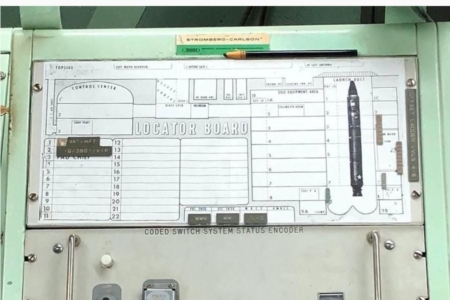
Figure 6.1 Note the Stromberg-Carlson wordmark and General Dynamics logo top-center, on this control console from a Titan ICBM launch complex.
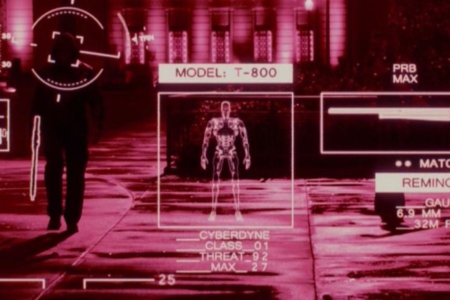
Figure 6.2 The Terminator’s machine vision, recognizing a fellow creation of Skynet as a Cyberdyne Model T-800. Source: Terminator: Genisys
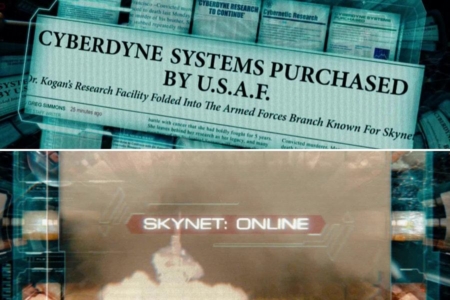
Figure 6.3 When Marcus Wright accesses the Skynet mainframe, he finds archived news reports of Cyberdyne’s purchase by the USAF, and subsequent activation. Source: Terminator: Salvation
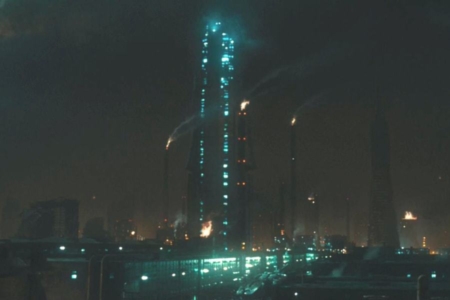
Figure 6.4 Skynet Central is located in the ruins of San Francisco, and houses an interface with Skynet’s mainframe, a Terminator factory and prison camp for human test subjects. Source: Terminator: Salvation
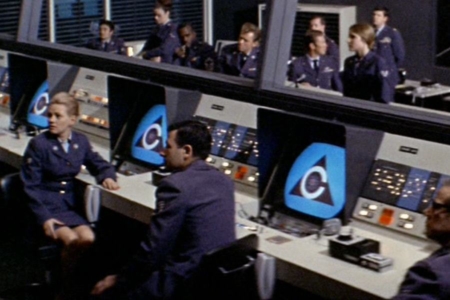
Figure 6.5 The superintelligent artificial intelligence Colossus stating its intent to enforce peace with nuclear force. Its face to the world, is the logo it was given by its human creators. Source: Colossus: The Forbin Project
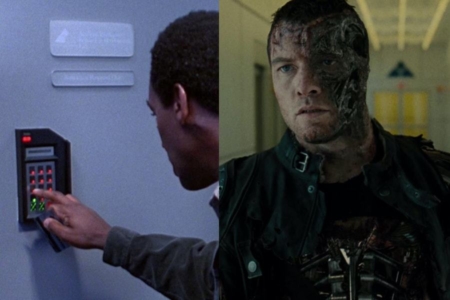
Figure 6.6 The Cyberdyne Systems logo on a door in T2 blends into the environment (left), while the Skynet logo above a door in Salvation seems placed for effect within the shot (right).
Analysis: The Design and Meaning of Skynet’s Visual Identity
The design of Skynet’s visual identity cannot be separated from its corporate origins, which are best understood by reading a previous research entry here on the site, specifically addressing Cyberdyne Systems. That said, I will cover and expand upon some of that entry’s more important insights here, regarding the mark’s design and how it could be read as a warning to film audiences. And of course, I’ll consider aspects of the mark’s design that are unique to its relationship with Skynet.
Starting with the geometry of the mark, we find that it is constructed of a triangle divided into three parts. On a basic level, a triangle can represent tension, action and aggression, due to the stable/unstable dynamic (depending on its orientation), with a triangle on its base conveying immovable strength. In T2, the shape could have added to the perception of Cyberdyne as a threat, and maybe communicated that the company and the future it delivers would not be easy for the film’s protagonists to topple or change. The same would apply for Skynet’s continued use of the mark — maybe even more so, as the Cyberdyne Systems wordmark was removed and all emphasis was put on the triangle.
While you are probably used to seeing the shape in hazard and warning signs, the triangle can also imply a more specific threat in the right context, due to its association with nuclear danger. This connection, if you are familiar with any of the following examples, could be induced by Skynet’s role in the nuclear apocalypse known as Judgement Day. For example, the triangle has a prominent place in the fallout shelter symbol (Figure 7.1) and the Civil Defense symbol (Figure 7.2), both spawned during the Cold War. It could also be found in graphics depicting the US military’s Cold War nuclear triad of ICBMs, bombers and SLBMs (Figure 7.3). And NATO uses a triangular sign to identify areas of radioactive contamination, which I came across in a Navy-issue deck of “Nuclear Attack Survival” study cards (Figure 7.4). As you’ll note, several of these examples involve the triangle being split into three parts as well, which strengthens their relationship to Skynet’s identity. And while it isn’t composed of triangles, the radiation trefoil probably comes to mind, due to its composition being similar to the lines we find in Skynet’s mark (Figure 7.5).
Even if the similarity to these symbols is merely coincidental, it’s there to find nonetheless, and reinforces the warning of nuclear danger that is central to stories that have been told in the Terminator universe. I would actually be surprised if they weren’t intentionally referenced, because Skynet itself a symbol of the grave danger that technology like nuclear weapons can pose to all humans — in spite of our intentions and beliefs, the control we think we have over these weapons might be an illusion, and we may not have a say in where things stop once we pull the trigger.
Beyond those connections to nuclear symbols, Skynet’s mark also bears a visual resemblance to its own physical manifestation in a number of Terminator’s timelines, where Skynet’s central core is actually housed within a massive pyramid structure. Though it never made it onto a movie theater screen, it did appear in the Universal Studios theme park attraction, T2-3D, that followed up on the story of T2. The Fandom Terminator Wiki states that the central core originally resided within Cheyenne Mountain in Colorado, where NORAD was based, before Skynet had the mountain around it destroyed sometime after Judgement Day, to reveal the giant metal pyramid as a symbol of the machine’s might.
Unfortunately, good images of its theme park appearance are hard to come by since it was shown in 3D, which didn’t lend itself to photos. I did find some low res concept art though, which I’ve pulled together with the Skynet mark and a NORAD cutaway illustration from an old brochure in my files (Figure 7.6). The visual play between the mark and a machine that almost destroys humanity, and the mountain fortress it supplanted, that was supposed to keep America safe, kind of drives home that message about technology we think we control, potentially being the death of us.
On a lighter note, I have to say that the idea of a machine intelligence not only carrying forward the visual identity of its corporate creator, but also emulating its design in its own advanced architecture, is a very sci-fi journey for a logo to take.
Putting the geometry of the mark aside, which has remained consistent with its corporate origins, we do find that Skynet’s use of color for the mark is something that changes from what we had previously seen from Cyberdyne Systems. In Salvation, it is reduced to one-color, and variously appears as solid red, white, blue or dark gray, depending on the application. Red was used in the context of screens displaying Skynet’s mainframe. White in the other GUIs, including the instance in Genisys, where it appeared in the Terminator’s machine vision — the only exception is the one full-color Cyberdyne version of the mark, used as a background image on a login screen, near the beginning of Salvation. Blue is used in Skynet Central’s labs, and what looks to be dark gray, is used above doors through the facility. In some instances, it was also rendered sculpturally, where it was cast in metal surfaces.
Color can carry all sorts of meanings, so it is difficult to say why the mark would appear in so many without more context. What may be likely, is they were chosen not for what makes a bunch of sense in-world as colors Skynet would pick out for this or that, but for what would blend in or stand out in given scenes as set dressing. And taken altogether, I really think the design choices for this identity overall, are more about what it says to the audience than what robots would realistically do with a logo anyways.
The important thing to remember, when seeing the mark all over things, in big and small ways, as machines exterminate humans and work up new ways to do it, is this machine was once a product. A corporation made it. We made it. And now it's doing what we do. And we may not have to look far to find something like it in the present…
So let the logo be a warning.
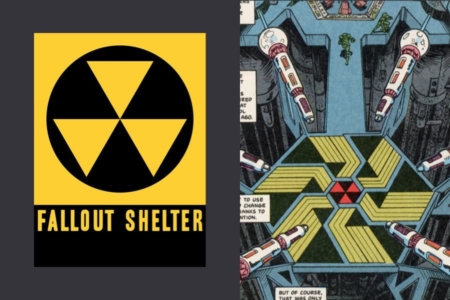
Figure 7.1 The fallout shelter symbol (left), even found its way into the first Dark Horse Terminator comics, where it was used in the time displacement chamber. This is was published in 1990, the year T2 went into production.
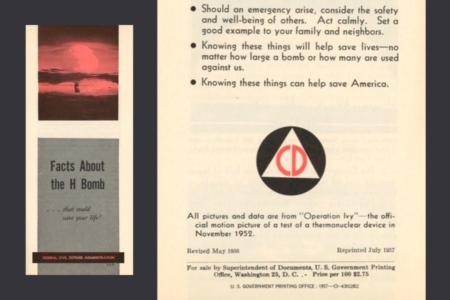
Figure 7.2 The Civil Defense symbol, seen here on literature aimed at preparing citizens for nuclear war, prominently featured a triangle.
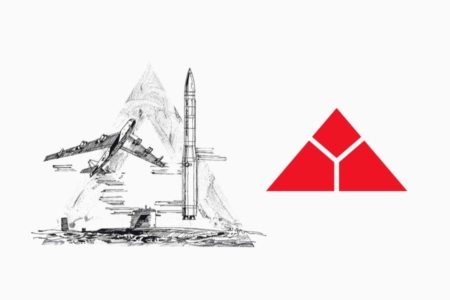
Figure 7.3 A vintage illustration depicting the Cold War nuclear triad, which consisted of ICBMs, bombers and SLBMs, next to the Skynet mark.
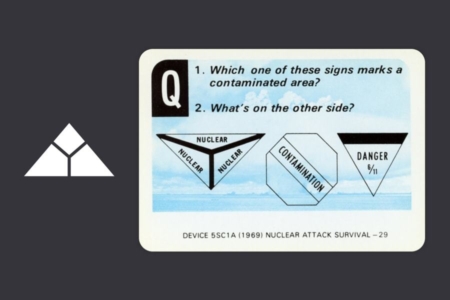
Figure 7.4 The answer to the question on this US Navy study card, is the sign on the far left, which bears some resemblance to the Skynet mark.
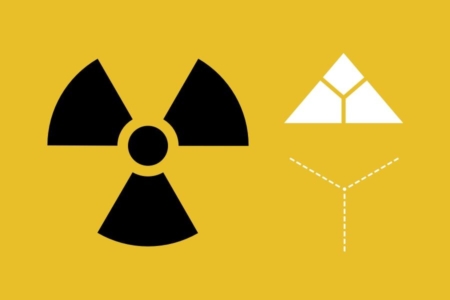
Figure 7.5 The universal symbol for radiation is composed of elements arrayed along the same lines that we find in Skynet’s mark.
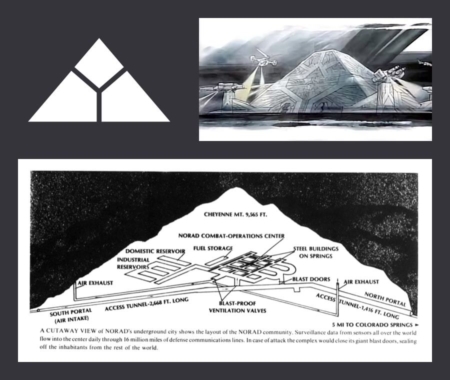
Figure 7.6 The Skynet mark’s triangular shape is echoed in the geometry of the central core pyramid (top-right), which stands were Cheyenne Mountain and NORAD used to exist (bottom).